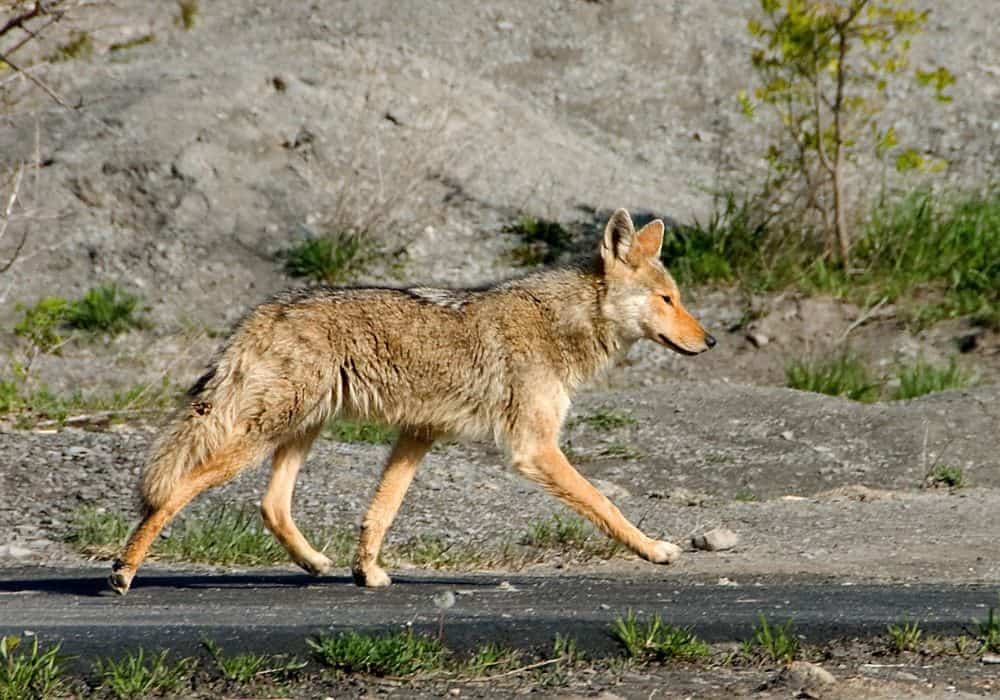Have you ever seen a coyote during the day? Probably not, and there is a reason for it! If you have chickens, you know that coyotes often target chicken coops because it is an easy and quick meal in case the coop is not predator-proof.
The attacks usually happen during the night, and many believe that is because coyotes are nocturnal animals. But are they? In reality, coyotes can be nocturnal, diurnal, and crepuscular.
So, where do coyotes go during the day? Coyotes are opportunistic hunters and easily adapt to different locations, which affects how much they will be active or passive. Let’s learn more about coyotes and where they go during the day.
Where Do Coyotes Hide During the Day?
So, as noted, coyotes can be nocturnal (active during the night), diurnal (active during the day), and crepuscular (active during the dawn and dusk). Coyotes are mainly nocturnal when inhabiting suburban and urban areas.
Considering that humans are most active during the day, that is the time when they opt to sleep to avoid any contact for obvious reasons.
Coyotes generally have a fear of humans, but it is not out of the ordinary to see one of them attacking people because they feel threatened or are desperate for food. Therefore, coyotes will rest during the day if they live close to humans.
So, where do they go? Coyotes will rest and sleep in caves, dens, trenches, and rock crevices during the daytime, and when night comes, they will go out and hunt.
Since more coyotes inhabit urban spaces, they can often be seen sleeping in golf courses, old buildings, shrubbery, parks, and sometimes pipes.
They often lay in dens, burrows, and shelters made by other animals, such as raccoons, badgers, or skunks.
Although they are excellent diggers and can often dig through soft dirt, they are not as good as badgers, which is why they often take over their abandoned dens. It is not out of the ordinary to see a coyote sleeping under a shade of a tree or a fallen tree trunk.
Basically, they will seek a shelter that is remote and unfrequented by humans or other predators that may attack them.
When Are Coyotes Most Active?
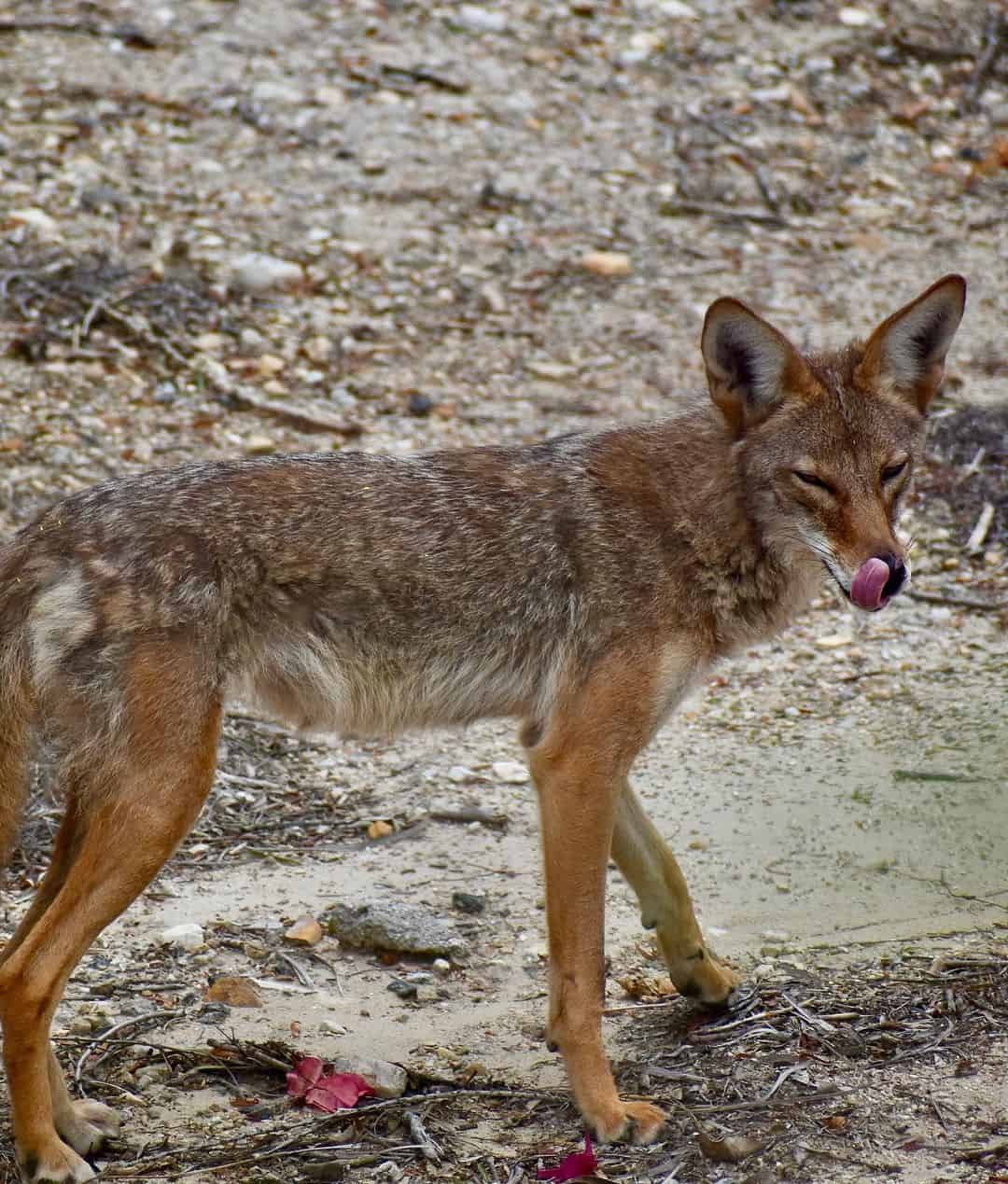
Image Credit: mathquark
Their activity mainly depends on their location and habitat. Obviously, there are differences between rural and urban coyotes, but they have one thing in common- they are active at specific times during the day or night.
For example, urban and rural coyotes are usually crepuscular; urban coyotes will hunt during dawn and dusk because that is when people are less active. On the other hand, rural coyotes are often active at dusk and dawn because their prey is active at that time.
Coyotes are considered omnivores because of their versatile diet, but they prefer meat over berries. They usually hunt small mammals, such as voles, white-tailored deer, and rabbits, active at dusk and dawn.
Therefore, their activity or hunting time is related to the period when their prey is active.
Compared to urban coyotes, which are often also nocturnal, rural coyotes are more active during the day, which they use to find prey, dens, and mates for the season. As noted, coyotes will use dens to ‘take a nap,’ but if a female is rearing the pups, she will inhabit the den.
After a 62-week gestation period (usually in April), the female will start to look for the den, while the male will be out looking for food. They hunt more often during the pupping season.
Like most predators, coyotes have excellent eyesight seven times better than human vision, in addition to their excellent peripheral vision, which covers around 260 degrees.
With such eyesight, moving undetected in their presence is hard, so coyotes are not easy to catch or kill!
Where Do Coyotes Live?
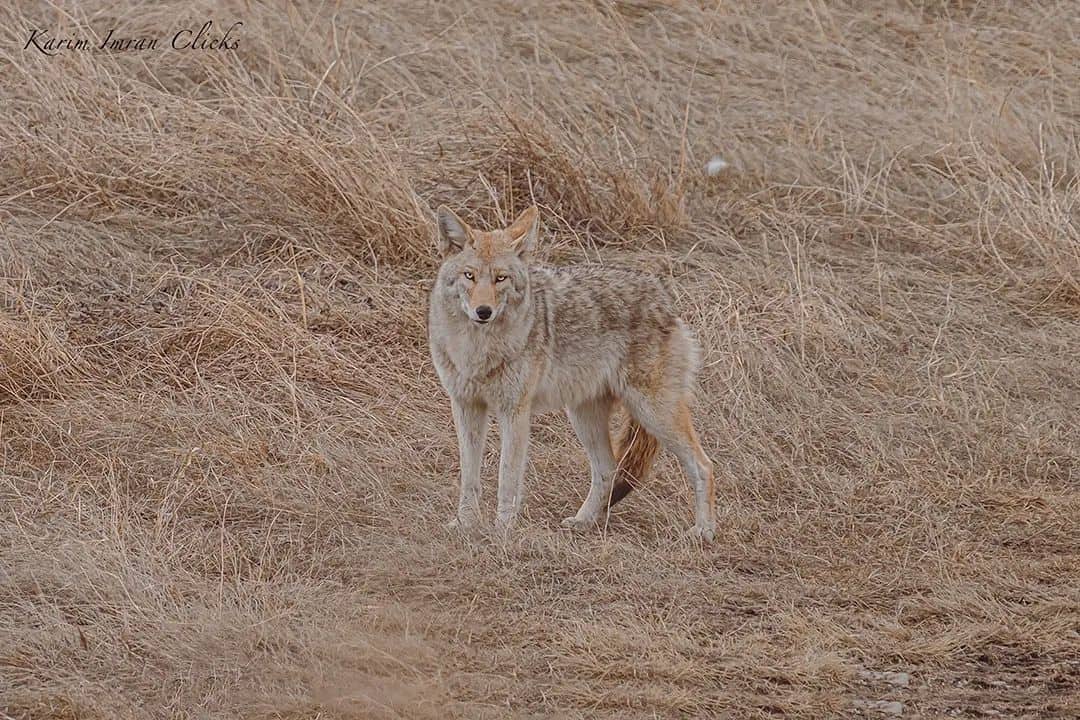
Image Credit: karim.imran.clicks
Coyotes are known as highly adaptable animals and will learn to survive almost anywhere. Their favorite climate is the desert-like climate because it offers an abundance of prey, ranging from snakes, birds, rodents, and other small mammals.
Did you know that coyotes are native to North America? Yes, that is true, and you can currently find them throughout the continent, including Canada, Alaska, and Central America. According to historical sources, they were common on the Great Plains.
Their life span is around 14 years in the wilderness, while in captivity, they usually live longer for about 20 years because they have no predators. They also have high roadkill numbers, so they are very careful and cautious in urban areas: their survival depends on it.
Also, coyotes are widely hunted in the US because hunting them protects livestock, controls populations, and helps farmers with the ecosystem.
Although some think that hunting them is cruel, the thing is, if their population is not controlled, it can cause various problems to the area they inhabit. They will seek to produce as much as possible and will not self-regulate.
In the last century, they have spread throughout the continent like wildfire, and wolves are not numerous enough to keep their numbers in check. As opportunistic and sharp hunters, they prefer to eat chickens and pets than chase woodchucks in the field.
How to Tell If There Are Coyotes Nearby?
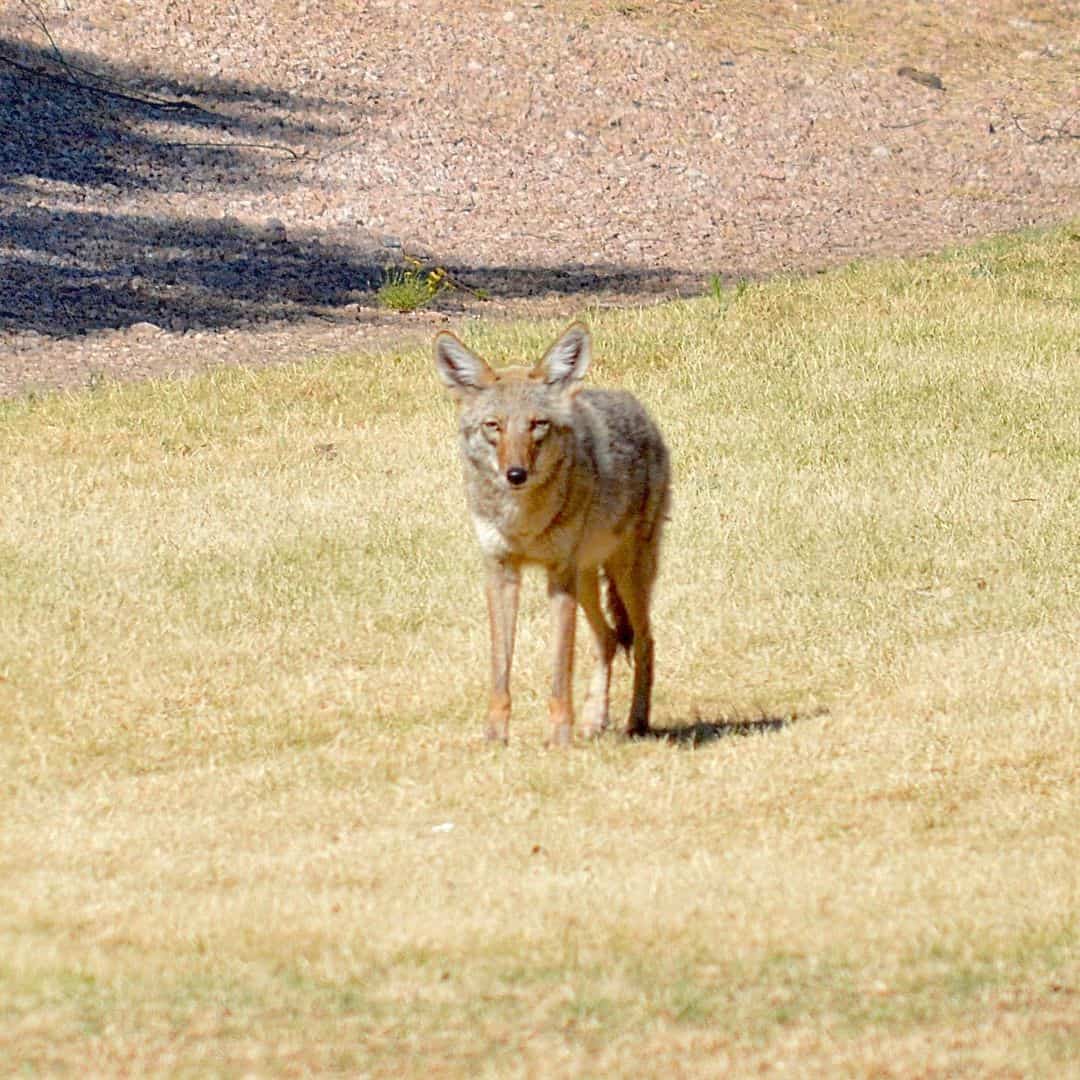
Image Credit: abitofeastandwest
Coyotes may even look cute to some people because they are very similar to dogs. However, coyotes can be such nasty pests and bring a lot of destruction and financial problems, especially if you keep chickens or other types of poultry.
That is why people often set traps for coyotes or call animal control, depending on where they live. So, coyotes are very social creatures, and they live in packs. Interestingly, they can even hunt in pairs or smaller groups but not in packs like wolves.
On the other hand, they are often solitary animals, and if they are inhabiting urban areas, the chances are that they are alone and will hunt alone. Sometimes, those coyotes try to join a pack or even create territory.
Howling
They are also very vocal and tend to howl, which is one of the ways to detect their presence. So, when and why do they howl?
Coyotes are very territorial and will howl to communicate with other members and “inform” other packs that the area or territory has been conquered. When defending their den, they will also bark or yip, and they use these vocalizations for short-distance communications.
Hearing coyotes howling will indicate that there are living nearby, but before you jump the gun, it does not have to be a large pack. People often hear them howl in a forest and think it is swarming with coyotes.
A pair of coyotes howling simultaneously can sound like an entire pack when using different variations.
Look for Tracks
At the same time, coyotes will also leave tracks where ever they go, although they are often mistaken for dog tracks.
Finding coyote fur on your fence or slides under the fence indicates that you have unwanted guests. Although fencing should be enough to keep them away, in most cases, it is not because coyotes are very savvy, sneaky, and athletic.
In addition, if you notice that your livestock or poultry has recent injuries, that is a sign that there are predators nearby. If you want to learn more about signs that indicate the presence of coyotes nearby, click here!
How to Handle an Encounter With a Coyote?
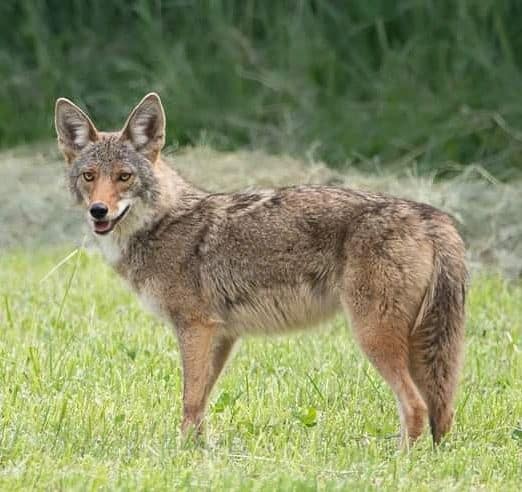
Image Credit: willowacresho
Whether you live in an urban area or even in a secluded part of the town, there is always a chance you might stumble upon a coyote, so it is recommended that you learn how to behave around them and avoid getting attacked or bitten.
Although it may be disturbing or shocking, we suggest you do not call the police or local wildlife control because that call should be reserved for aggressive and bold coyotes.
You probably wonder: “How will I know if a coyote is aggressive? Aren’t they all?” No, they are not, and according to a scientific study conducted in 2019, there are specific descriptions for aggressive coyotes.
That said, urban coyotes tend to be more aggressive and bold than rural coyotes. So, why is that? According to the same study, the reason why urban coyotes are bolder is due to natural selection but also learned behavior.
Those coyotes born in urban areas know that stealing food, going through garbage, and killing pets will, in most cases, have few consequences. If they are not caught at the scene, the chances of catching that coyote are very low (unless it frequents certain areas).
People battling these pests will buy traps and baits in rural areas, but these are unfit solutions for urban areas. Therefore, in the city, they are less exposed to danger than in a prairie or desert, which allows them to be bold.
These coyotes are usually very hardy and intelligent, meaning they will survive, reproduce and pass the behavior on to their pups. So, what to do if you see a bold coyote? First, do not panic; you must try to calm yourself!
Do not try to feed or approach it; they are wild animals and will act as such! They can also have rabies, and avoiding their attack is crucial.
Try Using Scare Tactics
Generally, when encountering most wild animals, it is suggested to use a scare tactic because you want to avoid getting in physical contact with that animal. Scare tactics include producing loud noises by yelling and screaming in a deep and commanding voice.
It is also suggested that you try to remain composed because these animals can sense fear and, in turn, behave even bolder. Also, try to make yourself appear larger by using a coat or a stick, whatever you can find.
By doing this, the coyote might think that it bit more than it can chew and will simply go away.
Hazing
Hazing coyotes is probably the most common technique to deal with coyotes. Hazing refers to using various deterrents to move the animal or discourage their behavior.
According to John Carlson, Animal Control Coordinator, you can use some deterrents such as pennies in the can, projectiles, rocks, banging pots or bowls, and whistles. This technique is meant to scare them rather than hurt them.
You can always clap your hand and slowly start to approach the coyote to establish dominance and show that you are not afraid. If you have tried all of the suggested methods above, and the coyote is still not leaving, that is your clue to call animal wildlife control.
Those are usually situations involving urban coyotes, which lose their fear of humans, attack children and pets, and steal food from porches. It can also be very unsettling to see a coyote following you, which is another example of their bold behavior.
Discourage their Behavior
The reason why coyotes come to urban areas is because of the abundance of food and water. Therefore, do not feed coyotes or leave scrap food in your backyard.
Although you might feel sorry for it, by feeding it, you are encouraging bad behavior; they are very skilled hunters and can hunt and find food perfectly fine on their own.
Also, do not leave your garbage in plastic bags; use containers because coyotes can easily rip through the bags and will make a huge mess!
Conclusion
During the day, coyotes usually sleep and rest if they are nocturnal and inhabit urban areas. However, their activity mainly depends on their habitat; if they live in urban areas, they are most likely active at night or dusk and dawn when humans are less active.
In the wilderness, they are usually diurnal and hunt during the day. They tend to sleep in shrubbery, burrows, dens, dense vegetation, low-growing bushes, and anywhere where they will rest in peace and without too much noise and human presence.
Have you ever encountered a coyote? Please share your experience with us! If you have any comments or want to ask something, do not hesitate!
